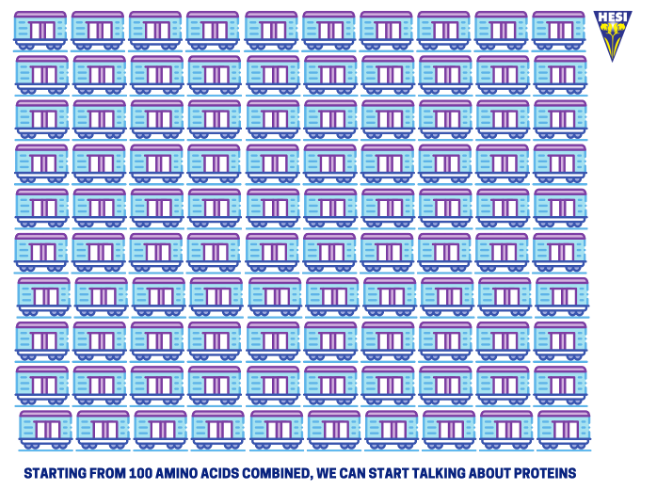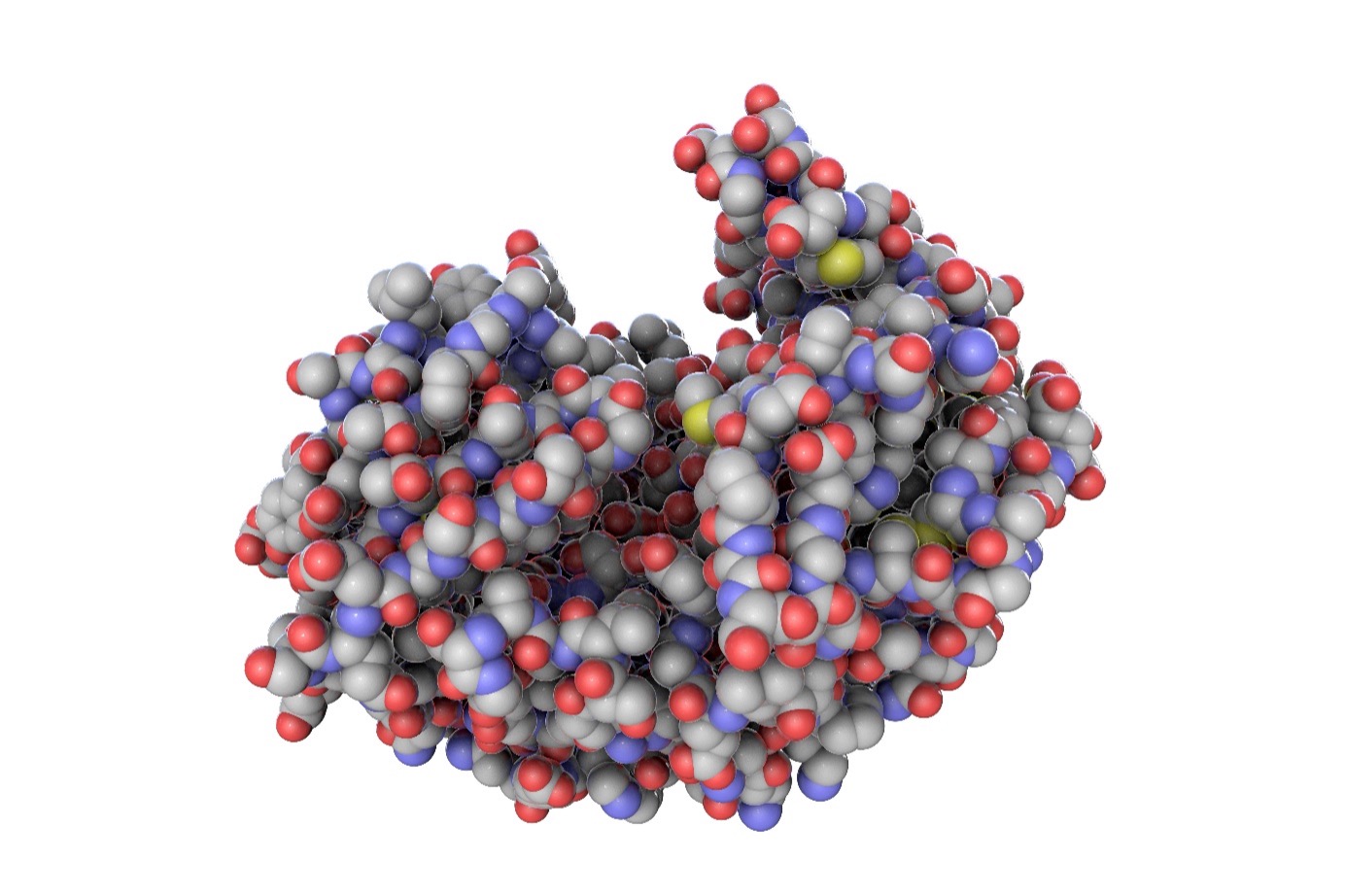Amino acids and enzymes
By pampering our plants and adding the right vitamins and amino acids to them, we are able to support the plants in the difficult task imposed on them: to grow as much as possible. We are creating not just strong plants, but you can see them as body builders. As already described in our article on vitamins, we are not talking about pills and drinks for humans as plants cannot do anything with those. If you want those bodybuilder plants, you will need products, specifically adjusted to the needed building blocks for plants.
We would like to teach you more about how plants convert our fertilisers and boosters into actual energy. Therefore, in this article we dive a layer deeper… into plant cells!
Proteins and amino acids
Previously in recent articles, we saw that vitamins are active during every step of the metabolism. They are the switching point of life. To perform this task, they are supported by a lot of helpers, partners, tools and building blocks. Who are these collaborators? Enzymes (enzymes are very big proteins).
And then to go one level deeper, what are proteins made of? Amino acids are the building blocks of all proteins, the smallest complex file particles. We all know these days how important proteins are for our health and well-being. If we don't eat enough protein, and in this respect it doesn't matter, whether this is animal or plant origin, we will get sick and be unable to maintain our fitness levels. We are also familiar with proteins from bodybuilders' shakes, which, through extra-concentrated proteins, support their training, thereby achieving even more (and faster) muscle formation.
Proteins are represented everywhere. Whether in animals, plants or microorganisms, proteins are the carriers of the life functions of all cells. In plants, proteins are mainly found within the cells as enzymes, whereas animals have next to the enzyme also proteins in the skin, muscles and other tissues.
How are proteins created from amino acids?
Proteins are essential to be operational. And proteins are dependent on amino acids, as they are their building blocks. How does that work exactly?
The characteristic of amino acids is that they always have two chemical groups. There are countless possibilities of amino acids theoretically conceivable, and yet all of life is formed by as many as 20 different amino acids. These 20 amino acids are the component of all proteins in animals, humans, plants and bacteria. The two ends of the amino acids (i.e. the amino and acid groups) form opposites and make up the special properties of the amino acids.
Tip: our SuperVit contains all amino acids required for all plant stimulation.
Amino acids train
An acid group and an amino group can couple with each other. Two train cars, joined together, keep two free couplings on the outside again. If two amino acids link together, a connection with two free couplings on the outside results in a train-like connection.
.png)
Starting from 100 building blocks, the already quite grown amino acid train is called a protein. And this is how proteins are created! The bond is so stable that in the laboratory we have to use brute force to open this connection (hydrochloric acid and nitric acid are minimally required). The bond is stable enough to make life possible. At the end of the day, we have stable muscles and do not fall apart easily (thankfully). Each animal or plant species has a number of specific proteins, which are characteristic of that species, and thus determine whether it becomes, let’s say, a tomato or a strawberry.

Enzymes
In the metabolism of cells, proteins are continuously taken apart and reassembled. A constant building up and breaking down of proteins is part of the metabolism of plants and animals. The disassembled building blocks are reused or partially (only in animals and humans) excreted. This process, as well as all other metabolic processes, are controlled by enzymes, including the building and breaking down of DNA, leaf green and also proteins. In plants, proteins are mainly assembled into enzymes.
They do that by travelling to the right place in the plant and carrying out the work. You can see them as a key that can gently open and reassemble the compounds of the proteins (the train cars as shown above). An enzyme is a mobile plant unit, which always has only one single task that it performs repeatedly without interruption. You can therefore imagine there are many different enzymes available, each for their own function. One could say that the enzymes thus regulate the entire metabolism.

Due to the immense size of the enzymes and the many amino acid building blocks (several 100 to several 1000), the proteins no longer form chains but crumple up into three-dimensional structures. This creates 3D shapes that make the key functions possible.
So do plants need to absorb proteins?
We all know we need to eat protein to grow (when we were young) or stay strong and in shape. People who are in the gym eat a lot of protein in particular, which is converted into muscle mass through exercise. But plants do not ingest protein; they produce everything themselves! A plant constantly makes amino acids. In doing so, it uses nitrogen and the other components, which we give them in the form of plant food. They do this using the energy gained from photosynthesis. This is why a high nitrogen supply is especially important for plants during the growth period, simply because more parts of the plants are added and the new plant parts also need new amino acids (and thus protein).
DNA: the recipe for protein
Okay, so there are an awful lot of different proteins (and thus amino acids needed to make them) and we know how the plant itself makes them. But how does a plant know which ones to make?
This information is stored in a plant's genetic code, its DNA. This contains the sequence of amino acids. In DNA, the number and order of the building blocks of proteins is programmed. The plant produces the amino acids itself from nitrogen from fertiliser, so why add extra amino acids?
Why does a bodybuilder drink extra shakes and thus extra protein to go way above his minimum protein intake? A body builder also usually looks different from someone who does not focus on building extra muscle, they look bigger and stronger.
We want to do the same with plants right? As we said at the beginning, we want to create bodybuilders among plants. After all, we expect a lot from our plant friends, especially because in nature they often take more time to perform the same amount of growth, and even get help from other plants around them. Within 8-13 weeks (depending on the species of the plant), we want to achieve best results through highly concentrated artificial light and other growing conditions. Pretty high pressure right? ;)
By adding extra amino acids and vitamins that in turn form enzymes, among other things, we can give the plant extra energy at the top level of the plants' metabolism. And so we are able to support the plants during the hard work, becoming as big and strong as possible.
If we offer the plants a specific combination of amino acids and vitamins, they can use them in abundance. We save the plant energy (because they are offered the building blocks and tools ready-made) and give the plant the opportunity to produce luxury plant parts.
Do you have any questions or comments about this article? Contact us via the contact form or via Instagram @Hesi_Global
- Cultivation Tips : Plant Care , Hesi Products , Cultivation Tips
- Growth period: Baby , Grow , Bloom
- Substrate: Hydro , Coco , Soil
 Deutsch
Deutsch  Français
Français  Español
Español 
